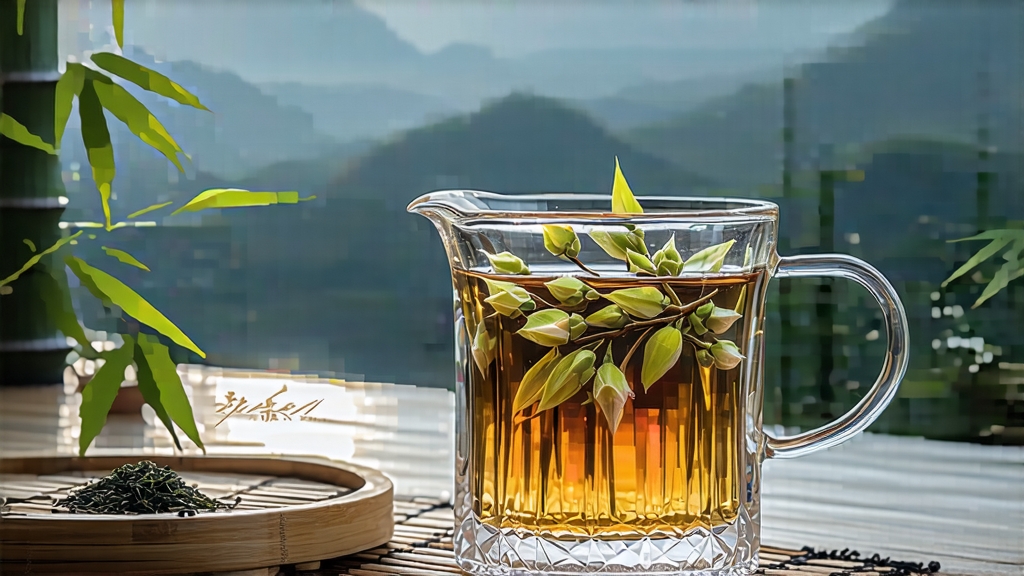
Among the six major families of Chinese tea, white tea is the least theatrical yet most elusive. It is not rolled into tight spirals like green tea, nor baked until it sings like oolong; instead it simply sleeps, allowing air and time to finish what the leaf began in the mountains. Within this quiet family, Fuding Silver Needle—Bai Hao Yin Zhen—stands as the purest expression of “less is more.” Every spring, only the unopened, down-coated buds of the Fuding Da Bai cultivar are persuaded to leave the garden, and for the rest of the year they wait on shelves, slowly evolving into the pale gold liquor that connoisseurs call “moonlight in a cup.”
Historical whispers
The written record is frustratingly thin, but local chronicles insist that bud-only white tea was already pressed into tribute cakes during the Song dynasty (960-1279). When the imperial court moved north, the cakes travelled along the Tea-Horse Road, wrapped in bamboo and camphor leaves to keep moths from the precious down. By the late Ming, loose-leaf fashion prevailed; cakes were abandoned, yet the buds—too delicate to withstand charcoal roasting—were simply sun-dried, creating the first recognizable Silver Needle. Foreign merchants encountered it in the port of Fuzhou in the 1850s, describing “white hairs floating like snow above a champagne-coloured infusion.” For a brief moment it rivalled black tea in London auctions, then receded into regional obscurity until the 1990s, when Chinese scientists celebrated its high theanine content and export figures climbed again.
Micro-terroir
Authentic Silver Needle comes only from the coastal counties of Fuding and neighbouring Zhenghe, where granitic soils drain quickly and the East China Sea moderates temperature. At 200-600 m elevation, morning fog prolongs withering by slowing moisture loss; ultraviolet light bouncing off the granite encourages the buds to synthesize protective amino acids, giving the tea its signature savoury-sweet balance. Farmers speak of “three clouds and two suns”—the ideal day when intermittent cloud cover allows buds to rest in shade, then drink brief sunlight, then rest again, layering fragrance without stress.
Plucking ritual
The harvest window opens when five consecutive days stay between 15-20 °C and relative humidity hovers at 75 %. Experienced pickers use only the thumb and index finger to snap the bud without squeezing the stem; a single kilo of finished tea demands roughly 30 000 buds, all gathered before ten o’clock so the cell sap remains cool. The basket is never packed deeper than 5 cm; bruised buds oxidise unevenly and lose their pear-like aroma.
Crafting by inaction
Once back at the shed, the buds are spread on reed trays 1.5 kg per square metre. For the next 36-48 hours they will be left almost entirely alone, turned only once every six hours with a feather-light bamboo rake. The key is to ride the valley between enzymatic activity and microbial spoilage: moisture must fall from 75 % to 20 %, but if the surface dries too fast the interior stays green and grassy, while too slow invites off-flavours. Master witherers read the air like sailors—when the mountain breeze carries the scent of wild orchid they know the leaf is crossing the invisible line from “alive” to “stable.” On the final afternoon, the buds are transferred to a charcoal-heated room maintained at 35 °C; twenty minutes of gentle warmth fixes the remaining enzymes without adding roast character. The result is a feather-light tea that is still 8 % water—soft enough to bend, dry enough to age.
Ageing potential
Unlike green tea, Silver Needle is encouraged to mature. In the 1990s a cache of 1979 needles was discovered in the back warehouse of a state-owned factory; cupped alongside the 1999 vintage, the older tea showed deeper amber, notes of dried longan and a mouthfeel as smooth as rice milk. The mechanism is slow auto-oxidation of residual catechins, coupled with Maillard reactions between amino acids and trace sugars. Connoisseurs store the tea in unglazed clay jars lined with rice paper, opening them only on the first full moon of autumn to rotate the stock and enjoy a retrospective infusion.
How to brew it Western style
Use 3 g for a 350 ml glass pot, water at 80 °C. After rinsing the buds